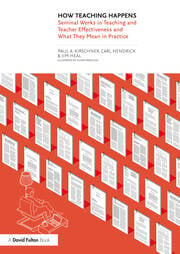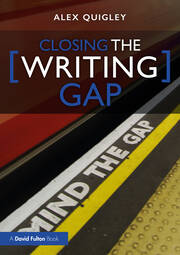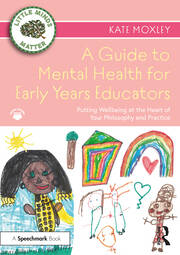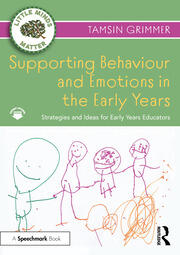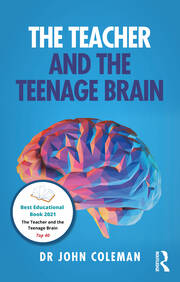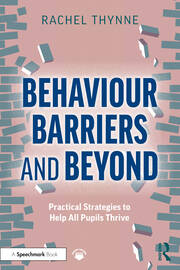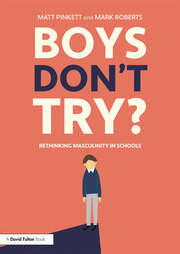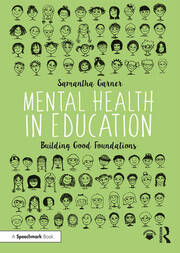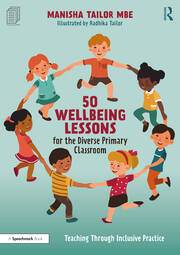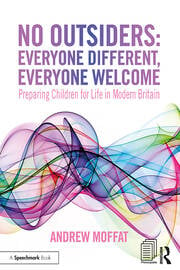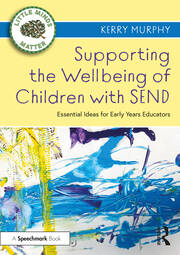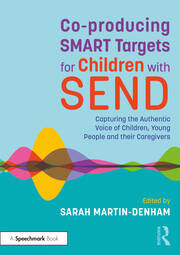Best Books for UK Teachers: How to Improve the Classroom Experience
Posted on: October 7, 2022
To stay up-to-date with teaching best practices, it’s essential for teachers to keep learning and evolve with new classroom techniques. However, with thousands of books on the market advertised to improve teaching and student learning, it’s hard to narrow down the best picks for your specific purposes.
Many books are written with all ages and subjects in mind, but it’s important to have specialised resources that pinpoint unique solutions. Not all education challenges are the same, so their answers shouldn’t be either.
Below are helpful books chosen to cover early years, primary school and secondary school challenges and techniques. Explore our book list and uncover the perfect resources for your teaching needs and interests:
Best books for teachers for professional development
New ideas are constant in the classroom — and they shouldn’t be limited to just students. As educators, learning is what drives the classroom experience, which is why professional development is key.
The best leaders guide by example. These books can help you do just that in the classroom:
- Paul A. Kirschner, Carl Hendrick and Jim Heal’s book, How Teaching Happens: Seminal Works in Teaching and Teacher Effectiveness and What They Mean in Practice, takes 30 seminal works from interdisciplinary fields to examine how to be an effective educator. It transforms research into practical applications for the classroom with six main sections: 1) Teacher Effectiveness, Development, and Growth; 2) Curriculum Development / Instructional Design; 3) Teaching Techniques; 4) Pedagogical Content Knowledge; 5) In the Classroom; and 6) Assessment.
- Do you need expert advice on how to improve students’ writing? Check out Closing the Writing Gap by Alex Quigley, which breaks down seven critical steps you can take to improve a child’s writing. From the history of teaching writing to how to edit for improvement, this book gives step-by-step approaches for teachers. These approaches are then backed by evidence to showcase how they can improve reading and writing skills.
- Mental health is an increasingly relevant and important subject in the classroom — and it extends to teacher wellbeing, as well. Kate Moxley’s A Guide to Mental Health for Early Years Educators: Putting Wellbeing at the Heart of Your Philosophy and Practice outlines how childcare educators can prioritize their mental health within a busy and demanding schedule. With a focus on self-empowerment and development, this book is an ideal resource for an often high-stress role.
Books for child development
Early childhood education is vital for future student success. At young ages, students are constantly learning and growing, ready to absorb new material each and every day. However, each child is unique and the same methods won’t work for all of them.
Find your go-to guide in our below list of carefully selected child development books:
- If you work with children before they enter school age, take a look at The Early Years Intervention Toolkit: Inclusive Activities to Support Child Development by Linda Tallent and Jean Thompson. Designed for early years practitioners and health visitors, this one-of-a-kind toolkit includes activities, a behaviour checklist and more to help track and guide young learners.
- Communication is learned, which is why it’s essential to help children better understand their emotions. But first, you have to improve the way you understand and work with young children. Tamsin Grimmer’s Supporting Behaviour and Emotions in the Early Years: Strategies and Ideas for Early Years Educators focuses on self-regulation and attachment theory to provide helpful strategies for educators.
- The Teacher and the Teenage Brain by John Coleman demonstrates how teachers can gain a better understanding of young people by learning about teenage brain development. It offers one-of-a-kind insight into helpful classroom strategies developed by Dr. Coleman’s extensive firsthand experience working with schools.
Books for classroom management
Whether you’re a new teacher or an experienced teacher, classroom management and engaging students can be challenging tasks. From problematic behaviours to distractions during lesson plans, it’s important to have a range of strategies handy to take control of your classroom. Once students are able to focus on your lesson plans, you can focus on improving their overall learning experience.
Arm yourself with proven and innovative strategies that can be found in these two helpful teaching books:
- When students act out, they’re often expressing an unmet need. In Behaviour Barriers and Beyond: Practical Strategies to Help All Pupils Thrive, Rachel Thynne tackles this concept with case studies and examples sensitive to Social, Emotional and Mental (SEMH) needs, as well as Special Education Needs and Disabilities (SEND). This text is written to make a greater impact on the child’s behaviour without taking away from a teacher’s task load and time in the classroom.
- Patriarchal biases harm everyone in the classroom, which is why Matt Pinkett and Mark Roberts take a deeper look into how educators teach their male students in Boys Don't Try? Rethinking Masculinity in Schools. From disappointing academic results to sexist attitudes to struggling to express emotions, this book explains how schools can create a positive environment for learning for male and female students alike.
Books for mental health support in the classroom
Educators spend most of the day with their young students, so they’re often the first to notice when students show signs of needing mental health support. However, to do so, teachers must be able to recognize the warning signs, from disruptive behaviour to students distancing themselves from others or the classroom.
Teaching books that put a specific spotlight on mental health support are invaluable to improving student engagement. Find out ways to help students inside the classroom and support their overall wellbeing and mental health through these insightful resources:
- Most schools lack the time, tools and resources to fully address student mental health problems, yet it should be a core focus in most teachers’ task lists. This practical book, Mental Health in Education: Building Good Foundations by Samantha Garner, aims to fill that gap by outlining actual techniques that teachers can use. These low-budget strategies focus on developing students’ self-esteem, behaviour management and relationships at all levels within the classroom.
- Want an in-depth, comprehensive resource filled with detailed lesson plans and ideas to promote social and emotional wellbeing in a diverse classroom? Look no further than Manisha Tailor’s 50 Wellbeing Lessons for the Diverse Primary Classroom: Teaching Through Inclusive Practice. This book provides educators with a broad range of activities and resources that challenge young students to understand empathy and encourage collaboration. These objectives and more help to support mental health and foster wellbeing in students.
- Alison Waterhouse’s Wellbeing Champions: A Complete Toolkit for Schools gives educators a practical toolkit designed to empower each young person in the classroom. It discusses the importance of centring conversations around emotions, self-care, resilience and communication to create “Wellbeing Champions” in your learning community. Written for primary and secondary teaching, this resource includes lessons, activities, training sessions, application forms, risk assessments, feedback forms and certificates.
Books for inclusive teaching
Inclusive teaching is the future of education. As a concept, it refers to the idea that teaching should support the needs of all students, regardless of their background or how they identify. By creating an inclusive learning environment, each student can fully engage with their lesson plans without feeling left out or at a disadvantage.
Ready to create a more inclusive teaching plan? Explore our below books for inspiration and strategies to ensure all voices are heard in the classroom:
- Each student brings their unique experience into the classroom and that should be celebrated — not criticized or ignored. No Outsiders: Everyone Different, Everyone Welcome: Preparing Children for Life in Modern Britain by Andrew Moffat emphasises this ethos of inclusion and tolerance. As a practising teacher, Moffat offers his firsthand experience supporting students and their differences. This book also includes handy lesson plans for classes from Early Years Foundation Stage (EYFS) to Year 6 to help guide fellow teachers.
- Beyond character differences, children show a range of different developmental needs in the classroom. With Kerry Murphy’s Supporting the Wellbeing of Children with SEND: Essential Ideas for Early Years Educators, early years practitioners gain access to a play-rich approach designed to make children feel “safe, secure and nurtured.” Based on education research, this text breaks down the four broad areas of need for young learners and provides teachers with meaningful practices to support each student.
- SEND Assessment: A Strengths-Based Framework for Learners with SEND by Judith Carter enables teachers to learn how to create a holistic profile of young students to address their special education needs. This critical resource gives educators, such as SENCOs and SEN practitioners, hands-on ideas and materials to help students face their unique learning challenges. It also shares seven key learning components to spotlight in the classroom, including cognition, communication, creativity, control, compassion, coordination and, last but not least, the curriculum.
- Learn how to develop a child-centred teaching approach with Sarah Martin-Denham’s Co-producing SMART Targets for Children with SEND: Capturing the Authentic Voice of Children, Young People and their Caregivers, which uses contributions from a wide range of schools at multiple student age levels. Each chapter of this educational book provides teachers with experiential case studies and activities to help caregivers and young people understand their aspirations, strengths and challenges. Designed for both mainstream and specialised classrooms, this text also shows how to teach students to capture their authentic voices.
Why it’s important to keep learning as a teacher
Education is a constantly evolving field. Today’s teaching techniques and practices are completely different from what they were even five or 10 years ago. Similarly, student needs and expectations have changed as well.
Due to this fast-paced change, it’s important for educators to keep ahead of the curve by furthering their own learning. Thankfully, teachers are not strangers to the learning process. As lifelong learners, teachers can improve the classroom environment and increase student engagement simply by continuing to grow with their careers.
By keeping up-to-date with expert books and resources, teachers can keep learning, which improves their capabilities in the classroom. The key to professional development is to keep students’ wellbeing and experience at the forefront of all teaching and learning strategies.
Additional resources for teachers from Taylor & Francis
Taylor & Francis is here to support you on your professional learning journey. From first-year teaching to specialised focus areas, we carry a wide variety of textbooks, toolkits and resources specifically designed for educators.
Want to explore our continuing professional development (CPD) books? Discover the best fit for you here.
For interdisciplinary, practical books for professionals across education, health and social care, explore our Speechmark resources here.


